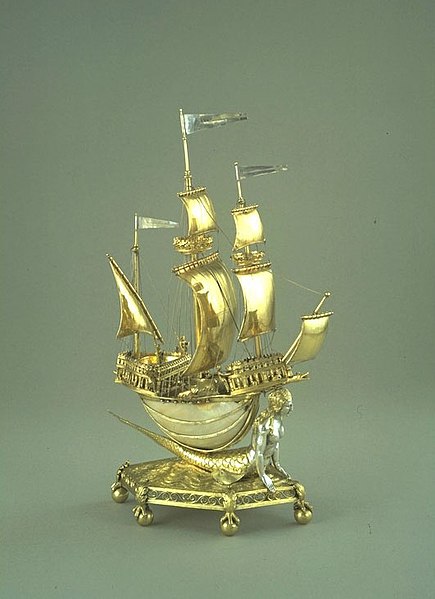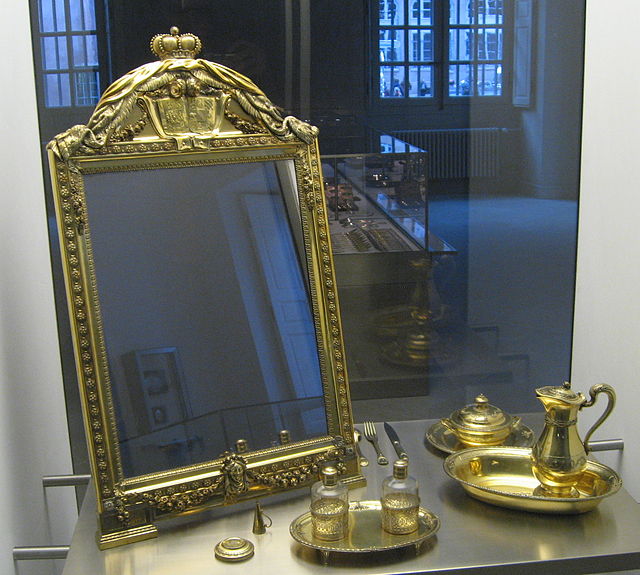Silver-gilt or gilded/gilt silver, sometimes known in American English by the French term vermeil, is silver which has been gilded with gold. Most large objects made in goldsmithing that appear to be gold are actually silver-gilt; for example most sporting trophies and many crown jewels are silver-gilt objects.
The Burghley Nef, silver-gilt (with sections ungilded), and nautilus shell, 1527–1528, France, V&A Museum
Silver gilt toilet service by Johann Jacob Kirstein, 1786
A vermeil wine cooler manufactured in 1810 by Paul Storr is located in the Vermeil Room of the White House.
Sassanid silver-gilt shield-boss, 7th century
Gilding is a decorative technique for applying a very thin coating of gold over solid surfaces such as metal, wood, porcelain, or stone. A gilded object is also described as "gilt". Where metal is gilded, the metal below was traditionally silver in the West, to make silver-gilt objects, but gilt-bronze is commonly used in China, and also called ormolu if it is Western. Methods of gilding include hand application and gluing, typically of gold leaf, chemical gilding, and electroplating, the last also called gold plating. Parcel-gilt objects are only gilded over part of their surfaces. This may mean that all of the inside, and none of the outside, of a chalice or similar vessel is gilded, or that patterns or images are made up by using a combination of gilt and ungilted areas.
Gilded frame ready for burnishing with an agate stone tool
Belt Buckle with nomadic-inspired zoomorphic design, manufactured in China for the Xiongnu. Mercury-gilded bronze (a Chinese technique invented by the Daoists in the 4th century CE). North China, 3rd-2nd century BC.
Regilding the statue Prometheus
Gilded page edges on a book








